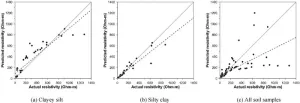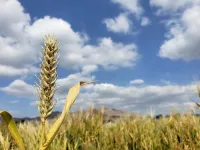(Press-News.org) Between 2018 and 2020, Australia implemented policy changes to improve the quality and safety of opioid prescribing, with a specific focus on oxycodone. A new study led by The University of Queensland (UQ) using wastewater analysis has determined that oxycodone consumption in Australia dropped by 45% from 2019 to 2020, coinciding with those national policy changes.
In November 2019, the Australian National Prescribing Service launched a federal initiative to improve opioid prescribing. The initiative involved alerting high-prescribing clinicians that their opioid prescribing practices were outside typical ranges for that practitioner group (2019), providing training in opioid prescribing (2019), reducing the oxycodone package size (2020), and adding warning messages to oxycodone packaging (2020).
The study used wastewater-based epidemiology to estimate the quantity of oxycodone consumed by a community by sampling the community’s sewage as it flowed into a wastewater facility and measuring the levels of oxycodone and its metabolite, noroxycodone, excreted in urine.
For this study, the Australian National Wastewater Drug Monitoring program (NWDMP) collected and analysed 6,999 samples from over 50 wastewater treatment plants across Australia from April 2017 to April 2023. The results of the analysis are listed below.
Oxycodone use initially increased from 78 mg/day/1000 people in April 2017 to 120 mg/day/1000 people in August 2019. This 52% increase occurred before the federal initiative to improve opioid prescribing began.
Oxycodone use then decreased from 120 mg/day/1000 people in August 2019 to 65 mg/day/1000 people in December 2020. This 45% decrease coincided with the introduction of prescribing guidelines in 2019 and oxycodone packaging changes in 2020.
Oxycodone use showed a minor 2.4% increase from December 2020 to April 2023.
Lead author Dr. Rory Verhagen from UQ’s Queensland Alliance for Environmental Health Sciences explains, “The main finding from this study was that a big reduction in oxycodone use between 2019 and 2020 coincided with the introduction of national clinical and regulatory changes intended to reduce pharmaceutical opioid use. It is likely that the combination of smaller package sizes and educational initiatives in 2019 and early 2020 reduced consumption of oxycodone in Australia.”
The reduction in oxycodone use has not been offset by an increase in heroin or fentanyl use in Australia. NWDMP monitoring shows that throughout the study period, the consumption of heroin fluctuated without any clear trend while fentanyl followed a similar trend to oxycodone.
The study was conducted by researchers from The University of Queensland, the University of South Australia, and Queensland Health, Australia with primary funding from the Australian Criminal Intelligence Commission; it appears in the scientific journal Addiction.
-- Ends –
For editors:
This Open Access paper is available on the Wiley Online Library (https://onlinelibrary.wiley.com/doi/10.1111/add.16653) or you may request a copy from Jean O’Reilly, Editorial Manager, Addiction, jean@addictionjournal.org.
To speak with lead author Dr. Rory Verhagen, please contact him via The University of Queensland Faculty of Health and Behavioural Sciences Media Team by e-mail (habs.media@uq.edu.au).
Full citation for article: Verhagen R, Gerber C, Thai PK, Connor J, Loveday B, Bade R, O'Brien J, Jaunay EL, Simpson BS, Chan G, Hall W, Thomas KV, Mueller JF, Tscharke BJ. Wastewater-based evaluation of the efficacy of oxycodone regulations in Australia. Addiction. 2024. DOI: 10.1111/add.16653.
Primary funding: The Australian Criminal Intelligence Commission and Queensland Health Australia provided financial support for this research. Wastewater catchment mapping and sampling was conducted under an Australian Research Council Linkage Project (LP190101124, LP220100058).
Declaration of interests: None.
Addiction is a monthly international scientific journal publishing peer-reviewed research reports on alcohol, substances, tobacco, gambling, editorials, and other debate pieces. Owned by the Society for the Study of Addiction, it has been in continuous publication since 1884.
END
Oxycodone use in Australia dropped 45% after policy changes to opioid prescribing
2024-09-11
ELSE PRESS RELEASES FROM THIS DATE:
Hot streets, historic bias: effects on neighborhood walking in older adults
2024-09-11
A neighborhood’s walkability is affected by many factors such as street connectivity and density; access to destinations and aesthetics; investment in walking and biking infrastructure; and the presence or absence of urban natural features, specifically tree cover.
Not all neighborhoods are alike. Many neighborhoods in impoverished and minority communities lack the cooling effect of vegetation and tree cover, especially in urbanized areas. As a result, residents face the “heat island effect,” where temperatures remain higher in urban areas ...
ETRI establishes international standards for AI safety and reliability support
2024-09-11
Recently, many major countries around the world, starting with the U.S., Japan, Germany, China, U.K., etc., have issued an administrative order to ensure the safety of AI technology, putting an emphasis on the safe, effective implementation of AI into their systems. In line with such trends, Korean researchers have collaborated with renowned AI experts from all around the world to create new AI-related international standards, garnering attention from the global AI community.
Proposal No.
Title
Status
ISO/IEC ...
Atypical metabolite levels at birth may increase SIDS risk
2024-09-11
WHAT:
Newborns who had an atypical pattern of metabolites were more than 14 times as likely to die of sudden infant death syndrome (SIDS), compared to infants who had more typical metabolic patterns, according to a study funded in part by the National Institutes of Health. Metabolites are molecules produced by the body’s various chemical reactions. Researchers found that infants who died of SIDS had a specific pattern of metabolites compared to infants who lived to their first year. The researchers believe that checking for this pattern could provide ...
How toxic are they? Researchers investigate the environmental consequences of new biotechnological pesticides
2024-09-11
Biotechnological pesticides are a promising alternative to traditional chemical pesticides. But we have limited knowledge of how toxic they are to other organisms in the environment beyond regulatory assessments. A new research centre will now work to provide this knowledge – especially to ensure the EU has a chance of joining the growing market for biotechnological pesticides. As for now, Europe has failed to keep up.
"If a thing kills something, we need to know how it kills, and who and what else it may kill," says Professor Nina Cedergreen of the University of Copenhagen’s Department of Plant and Environmental Sciences.
She is ...
Advancing power grounding systems: A novel predictive model for soil resistivity
2024-09-11
Proper power grounding systems are necessary for maintaining the safety and reliability of critical electrical subsystem infrastructure, such as substations. Power grounding systems provide a low-resistance path for electrical fault currents to flow into the earth, preventing electrical shocks, fires, and damage to vital equipment. Investigation of soil resistivity is crucial for designing power grounding systems. For the most cost-effective and efficient grounding systems for electrical substations, it is imperative to carefully ...
Unique nanodisk pushing photonic research forward
2024-09-11
Researchers at Chalmers University of Technology, in Sweden, have for the first time succeeded in combining two major research fields in photonics by creating a nanoobject with unique optical qualities. Since the object is a thousand times thinner than the human hair, yet very powerful, the breakthrough has great potential in the development of efficient and compact nonlinear optical devices. “My feeling is that this discovery has a great potential,” says Professor Timur Shegai, who led the study at Chalmers.
Photonic applications harness the power of light-matter interactions to generate ...
Century-old experiment secures beer and whiskey’s future
2024-09-11
Thanks to an experiment started before the Great Depression, researchers have pinpointed the genes behind the remarkable adaptability of barley, a key ingredient in beer and whiskey. These insights could ensure the crop’s continued survival amidst rapid climate change.
Grown everywhere from Asia and Egypt to Norway and the Andes mountains of South America, barley is one of the world’s most important cereal crops and has been for at least 12,000 years. As it has spread across the globe, random ...
Researchers improve search for cancer drivers
2024-09-11
PULLMAN, Wash. -- A computer algorithm can efficiently find genetic mutations that work together to drive cancer as well as other important genetic clues that researchers might someday use to develop new treatments for a variety of cancers.
Reporting in the journal Frontiers in Bioinformatics, a Washington State University-led team used a novel network computer model to find co-occurring mutations as well as other similarities among DNA sequence elements across several types of cancer. The model allows for easier searches for patterns in huge seas of cancer genetic data.
“This is a ...
Mirror, mirror, in my tank, who’s the biggest fish of all?
2024-09-11
What if that proverbial man in the mirror was a fish? Would it change its ways? According to an Osaka Metropolitan University-led research group, yes, it would.
In what the researchers say in Scientific Reports is the first time for a non-human animal to be demonstrated to possess some mental states (e.g., mental body image, standards, intentions, goals), which are elements of private self-awareness, bluestreak cleaner wrasse (Labroides dimidiatus) checked their body size in a mirror before choosing whether to attack fish that were slightly larger or smaller than themselves.
The ...
Scripps Research scientists expand the genetic alphabet to create new proteins
2024-09-11
LA JOLLA, CA—It’s a dogma taught in every introductory biology class: Proteins are composed of combinations of 20 different amino acids, arranged into diverse sequences like words. But researchers trying to engineer biologic molecules with new functions have long felt limited by those 20 basic building blocks and strived to develop ways of putting new building blocks—called non-canonical amino acids—into their proteins.
Now, scientists at Scripps Research have designed a new paradigm for easily adding non-canonical amino acids to proteins. Their approach, described in Nature Biotechnology on September 11, 2024, revolves around using ...






